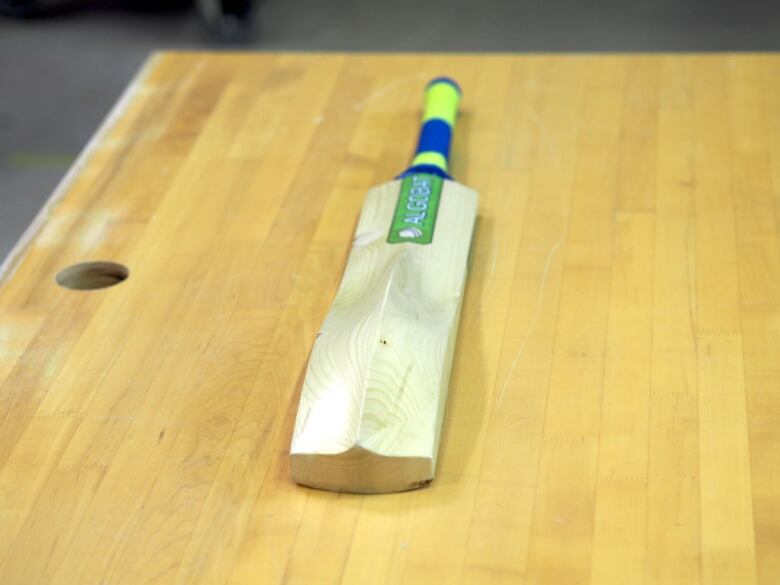Cricket for all: UBC researchers use algorithms to produce affordable cricket bat
Computer-assisted designs optimize performance, allows use of cheaper wood alternatives

As New Zealand and England battle it out in the 2019 Cricket World Cup final in London, an attempt to transform a crucial aspect of the sport has begun thousands of miles away at the University of British Columbia.
UBC forestry professor Phil Evans is leading a project that uses an algorithm to design a cricket bat that's cheaper to produce but just as powerful as the one used by professional cricketers.
Evans said his aim is to see a high-quality cricket bat in the hands of every aspiring cricketer.
"In India alone hundreds of thousands of kids play cricket and idolize cricketers, and they want a bat that resembles the one that cricketers are using," said Evans who spoke to CBC from Australia.
"We need to use cheaper material but we don't want to give them a bat that's not a good one."

The bat's 'sweet spot'
English willow is usually the wood of choice for high-performing cricket bats. Because it's scarce and expensive, itfurther increases the price of the bats, noted Evans.
A professional cricket bat made of English willow can set you back by as much as $800.
In cricket, the batsman's objective is to knock as many balls and accumulate "runs" for the team. And the best result is achieved when the batsman connects the ball to the bat's "sweet spot."
This is where Evan's algorithm-driven technique comes into play his team taught their computer to arrive at the best possible sweet spot when manufacturing a new bat, regardless of the type of wood used as raw material.
Cricket's home run
The algorithm, written by Evan's colleague Sadegh Mazloomi, went through 200stages in the manufacturing process, each one inching closer toward a point on the bat's surface that produces maximum impact.
The result is a wood paddle, nicknamed Algobatfor "algorithmically optimized,"which minimizes vibrations and maximizes rebound energy when it makes contact with the ball, allowing a batsman to transfer full power to the shot.
On a cricket field, this meansthe ability to send the ball far enough to achieve something akin to a home run.

According to Evans, the process can be used on cheaper wood alternatives like Kashmir willow or Canadian-grown poplar to make mass-producing bats more affordable.
And this, he says, can make cricketwhich enjoys a following by the millions inthe Commonwealth andSouth Asia even more popular and accessible.
"What we'd like to see is all the people who can't afford a decent bat be able to afford one and to get engaged in the game."

'Just one good player'
But Evans knows it'll take more than technology and a personal mission to bring the Algobat currently only a prototype made out of subalpine firinto the mainstream.
Professional cricketers are attached to their bats. They prefer hand-crafted English willow bats and are tied to legacy manufacturers by long-term commercial deals.
But Evans is batting on the side of hope.
"I think it will take just one good player to switch and start scoring freely with what we've designed. And other people will follow."












_(720p).jpg)


 OFFICIAL HD MUSIC VIDEO.jpg)
.jpg)



























































































